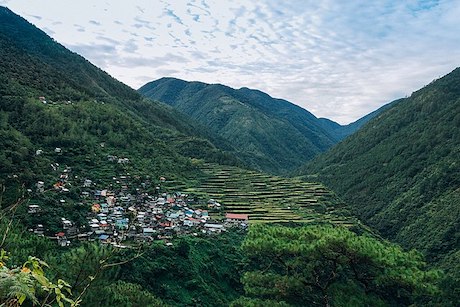
My good friend Jeff Mann, the true Yard Ramp Guy, has asked me to revisit some of my original contributions. And so: my From the Archives series. This week: A screw is basically an inclined plane. And that's no joke.
Simple machines are the basis of industry. Well, sorta.

No screw loose...but that basket's about to fall.
A simple machine is a device used to change the direction or power of a force applied to something in the simplest manner possible. There are six devices classically categorized as simple machines: axles and wheels, levers, pulleys, screws, wedges, and inclined planes (obviously the best).
The reason I said they're only sorta the basis for industry, though, is that the idea of simple machines is itself an oversimplification.
First off, take a look at wedges and screws. A screw is nothing more than an inclined plane wrapped around a cylinder. When you're turning a screw, picture it inside the material—climbing up or down the ramp—as the screw turns. Wedges are just two ramps hooked up to one another, bottom to bottom, for use in transferring force perpendicularly.
Ramps make up half of the classical simple machines. Ramps rule, but we already knew that.
Then you come to wheels and axles and pulleys. A pulley is just a wheel and axle with a rope attached. It's still super useful, of course.

One small step for man...and that's about all.
At first glance, our final classical simple machine, the lever, is pretty distinct from the others. A guy named Franz Reuleaux, however, realized that, like the wheel and pulley, the lever is just a body rotating about a hinge. Reuleaux was also the one who figured out that the screw, wedge, and inclined plane were the same. Really smart cookie.
So all in all, you've really got two simple machines and four variants on the original list. And that’s the first issue with describing the classical simple machines as the basis of mechanical industry.
The second issue? There are a lot more than six simple machines. You've got four-bar linkages and cranks, for example. Our good buddy Franz identified hundreds of simple machines using his self-invented science of Kinematics, which we still use today. Way to go, Franz. Not bad for a guy born in 1829.
Nowadays, thanks to Franz and Kinematics, we actually consider joints the basis of mechanics, but that's a story for another day.
The Yard Ramp Guy Blog: New Inventory - In Stock
This week, my friend The Yard Ramp Guy has launched a smart, strategic arm of his business: selling new yard ramps that are in stock and ready for delivery. I do admire his strategy.
Click HERE to read the smart details.





 The Diolkos, built by the ancient Greeks, was half ramp, half causeway. It was used to transport ships across the Ithmus of Corinth, saving them a dangerous sea voyage. The ancient Greeks actually dragged the ships overland on it. (You'd think a canal would be easier to use, but canals are a lot harder to build and maintain.) Huge teams of men and oxen would have pulled the boats and cargo across it in about three hours per trip.
The Diolkos, built by the ancient Greeks, was half ramp, half causeway. It was used to transport ships across the Ithmus of Corinth, saving them a dangerous sea voyage. The ancient Greeks actually dragged the ships overland on it. (You'd think a canal would be easier to use, but canals are a lot harder to build and maintain.) Huge teams of men and oxen would have pulled the boats and cargo across it in about three hours per trip.